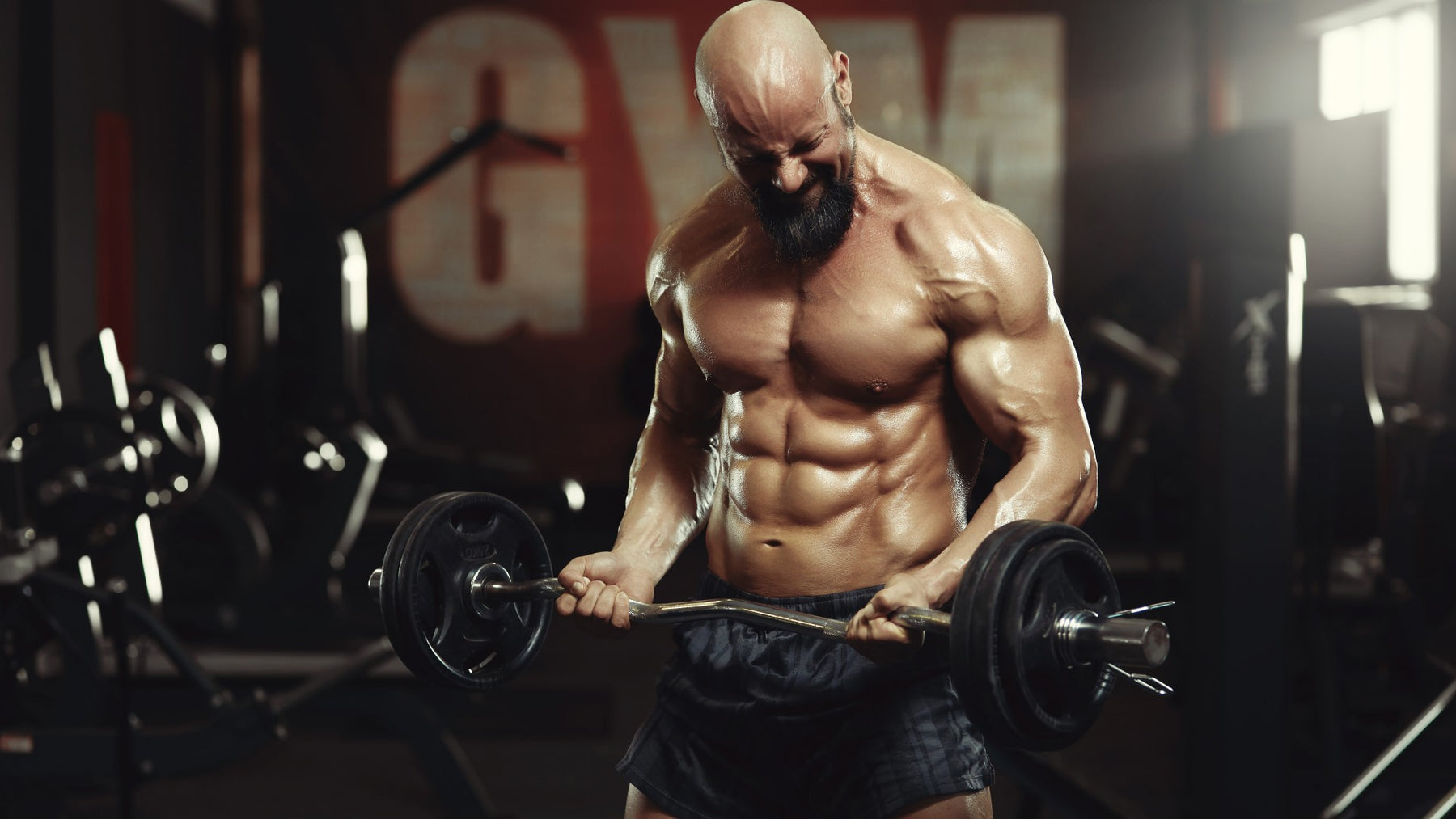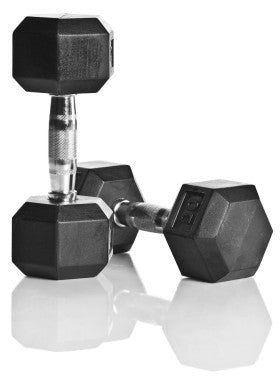
MITE - Massive Intensity Training For Experienced Lifters
- Layne Norton's PHAT training system
- Brandon Campbell's PHUL training system
- Raymond Querido's SHUL training system
- Jonnie Canditio's Strength & Hypertrophy Program
This program uses 2 of it's 4 working days to focus on pure strength training. The key to getting stronger and bigger is to utilize progressive overload and time under tension. These 2 days will see that you'll be able to use more weight on your hypertrophy days.Less experienced lifters will take away the following point, among other things: the strength days well - make me stronger. This extra strength allows me to use more weight on hypertrophy days, thus helping me build muscle.
This is one of the meta-themes gleaned from these style of workouts. Whether or not it is the intent of the authors, many trainees believe that these strength/power days are for building raw strength only, and have a minimal direct impact on the muscle building process. Nothing could be further from the truth.

What Weight Intensity Does to a Muscle
Now wait. Before you get all pissed off at me, let me repeat something. I DID NOT make the claim that these lifters believe that strength/power days don't build muscle. I stated that many (not all, but many) lifters who read these programming articles walk away believing that strength days don't build muscle.
Strength days are actually your primary muscle builders. Let me explain.
Working in the 5-8 rep range, or with weights that are approximately 80-85% of your one rep max, does a unique thing to a muscle. These "power" sets motivate your system to recruit a near-maximal amount of muscle fibers from rep one. Pretty cool, huh?
Sets performed with a lower intensity (less than 80%ish) take time to get a muscle completely in the game. Initially, only a percentage of a muscle's fibers are recruited. As the reps mount, more and more fibers are called into action to handle the mounting fatigue and continuous and unceasing load.
Simply stated, the closer you take a set to failure, the more muscle fibers you recruit. Failure is not a requirement, but pushing towards failure is. I wanted to mention this before you thought I was about to go all HIT Jedi on your ass.
All of this has been well-documented, and regurgitated by a near-endless number of quality sources. If you don't believe me do your own research. It's out there and easy to find.
This lower intensity work is typically featured on hypertrophy days.
Strength Days Are Great Hypertrophy Days
 Now, getting back to higher intensity sets, or your strength/power days.
Now, getting back to higher intensity sets, or your strength/power days.These 5-8 rep sets do an excellent job at recruiting your Type II muscle fibers. Type II fibers have the greatest potential for muscle growth. And when I say greatest, I actually mean GREATEST. Let that sink in, and sink in deep.
The strength days in these programs are great hypertrophy days. While they don't have the time under tension and volume that most hypertrophy-focus days do, 5-8 rep sets do a good job of maximizing muscle fiber recruitment from the get-go.
And on that day, not a single rep was wasted.
Whipping Out My Pet Peeve
Hide the small children and farm animals, I'm about to whip out a pet peeve. I believe that differentiating these training days as strength/power and hypertrophy is a huge misnomer.mis·no·mer. a wrong or inaccurate name or designation.The strength/power days of these programs are arguably your best muscle building days. But what about the hypertrophy days? They are actually quality strength building days. Because these hypertrophy sets (lower intensity) must be pushed for as many reps as possible to recruit as many muscle fibers as possible, you are constantly in a state that is seeking progressive overload.
Progressive overload is the increasing of resistance per exercise over time. Bam, you are adding strength.
So simple, so obvious. So many ways to confuse the masses.
Instead of labeling higher intensity muscle building work as a strength/power day, and lower intensity work that builds both muscle and strength as a hypertrophy day, it would be better to call them higher and lower intensity days.

Instead of labeling higher intensity muscle building work as a strength/power day, and lower intensity work that builds both muscle and strength as a hypertrophy day, it would be better to call them higher and lower intensity days.
The Concept of Intensity Cycling
There is synergy between the strength and muscle building processes. You can't build muscle without adding strength, and you can't build more strength without adding more muscle. Not exactly rocket surgery, but half the men on the Internet seem to think I am full of bull when I mention this concept.
One might be tempted to only work within the 5-8 rep range. While this is certainly viable for perhaps the first several years of training, if one so desired to train this way, the average intensity per set might become a bit too much when placed within a structure that has you targeting each muscle group more than once per week.
During my first several years of lifting a large portion of my sets were performed within the 5-8 rep range. I was using a 3-days on, 1-day off program and was accumulating strength quite rapidly. It wasn't long before my joints started to feel a little beat up. Being an ignorant young snot, and acquiring my stubborn nature from a tough-as-nails German grandmother, I continued on with this approach.
Eventually, I threw out my lower back and picked up elbow tendonitis. I was trying to combine volume, intensity AND frequency, and refused to listen to my body and tweak my training style.
Idiot I was, invincible I felt. For a while.
Looking back, I should have made the following adjustments: Adjustment #1 - Cycle Intensity. I should have cycled intensity. Because I was training each body part multiple times per week, it would have been OK to bounce back and forth between higher intensity work in the 5-8 rep range, and slightly less intense work in the 8-12 rep range.
Adjustment #1 - Cycle Intensity. I should have cycled intensity. Because I was training each body part multiple times per week, it would have been OK to bounce back and forth between higher intensity work in the 5-8 rep range, and slightly less intense work in the 8-12 rep range.
Adjustment #2 - Take Some Damn Time Off. I should have taken a complete week away from training when I started to feel beat up. Taking this further, it would have been a good idea at this point to back away from the 5-8 rep range and lower the intensity a bit for a while.
Adjustment #3 - Pump Work, Dammit. There is mounting evidence that pump work DOES have an impact on the muscle building process. While "the pump" might not be the prime muscle building mechanism, it is a nice tool that I should have incorporated during those periods of time when I was lowering my overall training intensity.
Yawn...Is There a Point? Enter, MITE
Yes, there is a point. Enter MITE:Massive Iron Intensity Training For Experienced Lifters
That's the best I could come up with, so don't laugh. We all know a training program needs an acronym to be legit, so there you have it. MITE.MITE is a program I developed for trainees who have spent at least 6-8 months developing a quality amount of muscle and strength, and are no longer beginners. I call these trainees "experienced" rather than intermediates. Why? I wanted to stress that you must develop a track record of building muscle and strength using a beginner-style program before using MITE.
Here are the two principles that drive MITE. MITE gains, son. MITE gains.
Principle #1 - Cycle intensity. Block A, performed during weeks 1-6, will feature high and moderate intensity training. Block B, performed during weeks 7-12, will focus more on moderate intensity training and pump work.
Principle #2 - Push sets for max reps. Regardless of the intensity rep range used, each set should be pushed for as many reps as possible. This ensures that no set is wasted, that we are recruiting as many muscle fibers as humanly possible, and that progressive overload is maximized on each and every set.

I like the word powerbuilding. I am not just a powerlifter, and I am not just after muscle gains. I want to be the biggest and strongest freak I can be.
MITE Training - A 12 Week Powerbuilding Cycle
I like the word powerbuilding. I am not just a powerlifter, and I am not just after muscle gains. I want to be the biggest and strongest freak I can be. If this sums up your goals, then you might be a powerbuilder too.Block A, Weeks 1-6: High & Moderate Intensity Training
During the first 6 weeks of this program, or Block A, you will perform the following split:- Day 1 - Heavy Posterior
- Day 2 - Heavy Press
- Day 3 - Off
- Day 4 - Moderate Posterior
- Day 5 - Moderate Press
- Day 6 - Off
- Day 7 - Off
After this 6 week block, you can either take a few days off, a complete week off, or jump right into Block B. I recommend letting life and your body dictate how you approach time off. Use your head.
 Deadlifts - Start with about 75% of your one rep max. Perform as many quality singles as you can in 10 minutes. When you are able to perform 8+ singles, add 5 lbs to the bar the following heavy deadlift workout.
Deadlifts - Start with about 75% of your one rep max. Perform as many quality singles as you can in 10 minutes. When you are able to perform 8+ singles, add 5 lbs to the bar the following heavy deadlift workout.Rack Pull & Power Shrugs - Start with the bar at least at knee level. Explode the bar up and finish the movement with a power shrug. No need to train this movement to the brink of failure. Do as many quality reps as you can per set. Please use straps for this exercise. We are building traps and your deadlift, not grip strength.
Leg Press - You can never have enough quad size and strength. Embrace this exercise.
Ab Wheel Roll Outs - Just get to 30 total reps. When you can do this in 10 sets, it's OK to increase the number of reps per set.
Pull Ups - Perform pull-ups if you can. If not perform V-bar pulldowns. Inverted rows are also a decent choice.
Lying Triceps Extensions - Don't bring the bar to your forehead. Bring it to the top of your head (not your forehead). the long head of the triceps is a 2 joint movement. This extra distance helps work it a bit harder.
| Block A | |||||
|---|---|---|---|---|---|
| Heavy Posterior | |||||
| Exercise | Sets | Rep Goal | |||
| Deadlift | 1 | Singles* | |||
| Squats | 3 | 20 | |||
| Leg Curls | 3 | 30 | |||
| Seated Calf Raise | 3 | 25 | |||
| Ab Wheel Roll Outs | Vary | 30 | |||
| Block A | |||||
|---|---|---|---|---|---|
| Heavy Press | |||||
| Exercise | Sets | Rep Goal | |||
| Bench Press | 3 | 20 | |||
| Pull Ups or V-Bar Pull Downs | 3 | AMAP/30 | |||
| Military Press | 3 | 20 | |||
| Lying Triceps Extensions | 3 | 30 | |||
| Dumbbell Curls | 3 | 30 | |||
| Block A | |||||
|---|---|---|---|---|---|
| Moderate Posterior | |||||
| Exercise | Sets | Rep Goal | |||
| Leg Press | 3 | 30 | |||
| Rack Pull & Power Shrug Combo | 3 | 30 | |||
| Stiff Leg Dumbbell Deadlift | 3 | 30 | |||
| Standing Calf Raise | 3 | 35 | |||
| Planks | 3 | 60-120 sec | |||
| Block A | |||||
|---|---|---|---|---|---|
| Moderate Press | |||||
| Exercise | Sets | Rep Goal | |||
| Incline Dumbbell Bench Press | 3 | 30 | |||
| Barbell Rows | 3 | 30 | |||
| Seated Arnold Press | 3 | 30 | |||
| Close Grip Bench Press | 3 | 30 | |||
| EZ Bar Curls | 3 | 30 | |||

The closer you take a set to failure, the more muscle fibers you recruit. Failure is not a requirement, but pushing towards failure is.
Block B, Weeks 7-12: Moderate & Pump Intensity Training
During the second 6 weeks of this program, or Block B, you will perform the following split:- Day 1 - Moderate Posterior
- Day 2 - Moderate Press
- Day 3 - Off
- Day 4 - Pump Posterior
- Day 5 - Pump Press
- Day 6 - Off
- Day 7 - Off
Pump Sets - Rest only 30 seconds between sets.
Deadlifts - Stop each set when your form starts to break down. No exceptions. Live to fight another day and take care of your back.
Paused Squats - You will likely want to drop the weight by about 30% from your heavy work and start there. So if your heavy sets are with 300, drop to about 210 and try your paused work.
Power Shrug Hell - Start with 135 pounds on the bar and perform 10 power shrugs. Keep adding a 45 pound plate to each side and performing 10 reps until things get tough. At that point add only a 25 to both sides. When you can't do 10 reps with a weight, stop. Limit rest between sets as much as possible. Slap on the plates, catch your breath, and shrug.
Ab Wheel Roll Outs - As many reps as possible per set.
Paused Bench Press - Pause at the bottom while remaining tight for a one second count.
| Block B | |||||
|---|---|---|---|---|---|
| Moderate Posterior | |||||
| Exercise | Sets | Rep Goal | |||
| Deadlifts | 2 | 15 | |||
| Paused Squats | 3 | 30 | |||
| Reverse Hack Squats | 3 | 30 | |||
| Seated Calf Raise | 3 | 35 | |||
| Ab Wheel Roll Outs | 3 | AMAP | |||
| Block B | |||||
|---|---|---|---|---|---|
| Moderate Press | |||||
| Exercise | Sets | Rep Goal | |||
| Paused Bench Press | 3 | 30 | |||
| One Arm Dumbbell Rows | 3 | 30 | |||
| Military Press | 3 | 30 | |||
| Lying Triceps Extensions | 3 | 30 | |||
| Dumbbell Curls | 3 | 30 | |||
| Block B | |||||
|---|---|---|---|---|---|
| Pump Posterior | |||||
| Exercise | Sets | Rep Goal | |||
| Leg Press | 5 | 70 | |||
| Power Shrug Hell | Varies | N/A | |||
| Leg Curls | 5 | 50 | |||
| Standing Calf Raise | 5 | 60 | |||
| Planks | 3 | Max Time | |||
| Block B | |||||
|---|---|---|---|---|---|
| Pump Press | |||||
| Exercise | Sets | Rep Goal | |||
| Dumbbell Bench Press | 5 | 50 | |||
| Barbell Rows | 5 | 50 | |||
| Seated Two Arm Dumbbell Press | 5 | 50 | |||
| Rope Cable Triceps Extensions | 5 | 50 | |||
| Rope Cable Bicep Curls | 5 | 50 | |||

Leave a comment